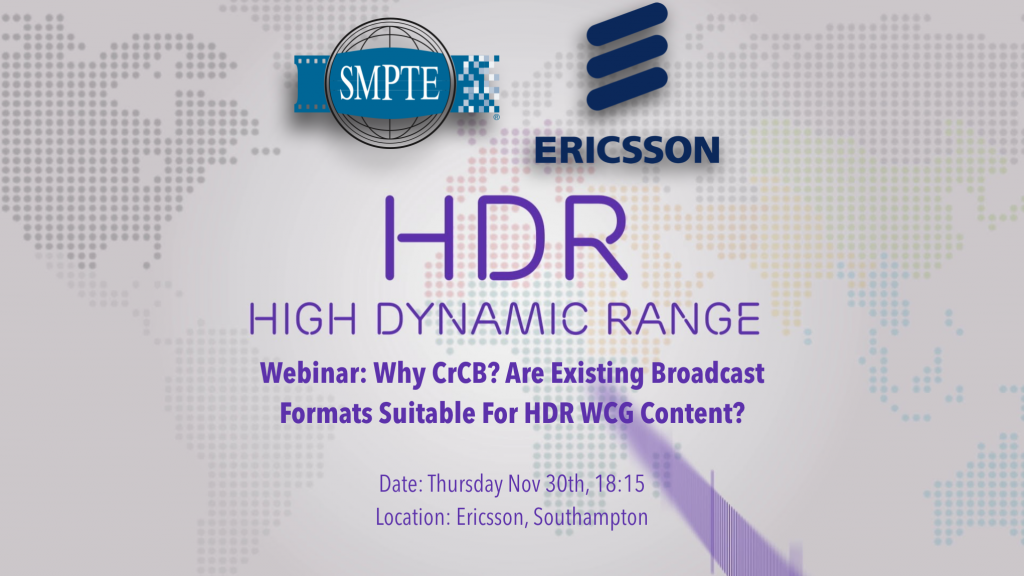
Date: Thursday November 30, 2017 – Ample Refreshments from 18:15 GMT for 19:00 start.
Location: Ericsson Television, Strategic Park, Comines Way, Hedge End, Southampton, SO30 4DA. Google Maps
With higher resolution, wider colour gamut and extended dynamic range, the new Ultra High Definition TV (UHD) standards define a container which allows content creators to offer the consumer a much more immersive visual experience. However there are some artefacts noted within the container particularly around HDR material. Olie Bauman outlines why YCrCb are used and the human vision systems response to changes in chroma/luminance and the correlation between R, G and B
As HDR and WCG expand the Colour Volumes he will show why these increased from SD (601) to HD (709) to UHD (2020) and show the difference between PQ (Display Referred) and HLG (Scene Referred) workflows
From this background he will show examples of artefacts due to chroma down-sampling and show the different characteristics – depending on work flow.
He highlights that the problems will become greater as more content exploiting the full UHD container becomes available, requiring additional care and processing in content production and delivery.


